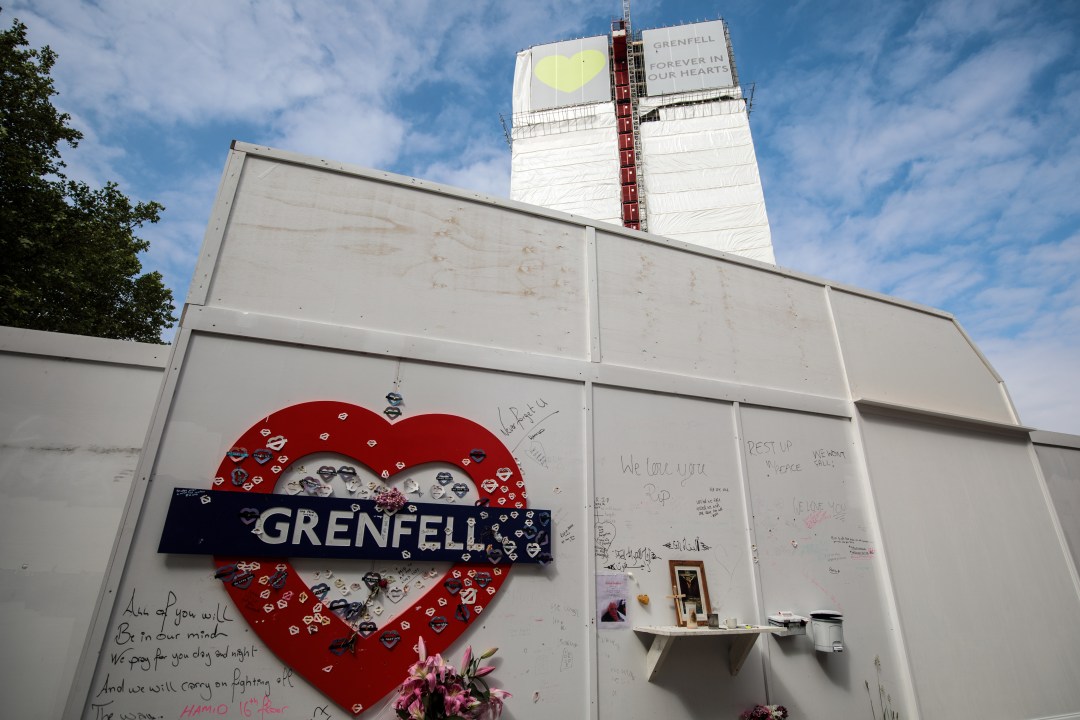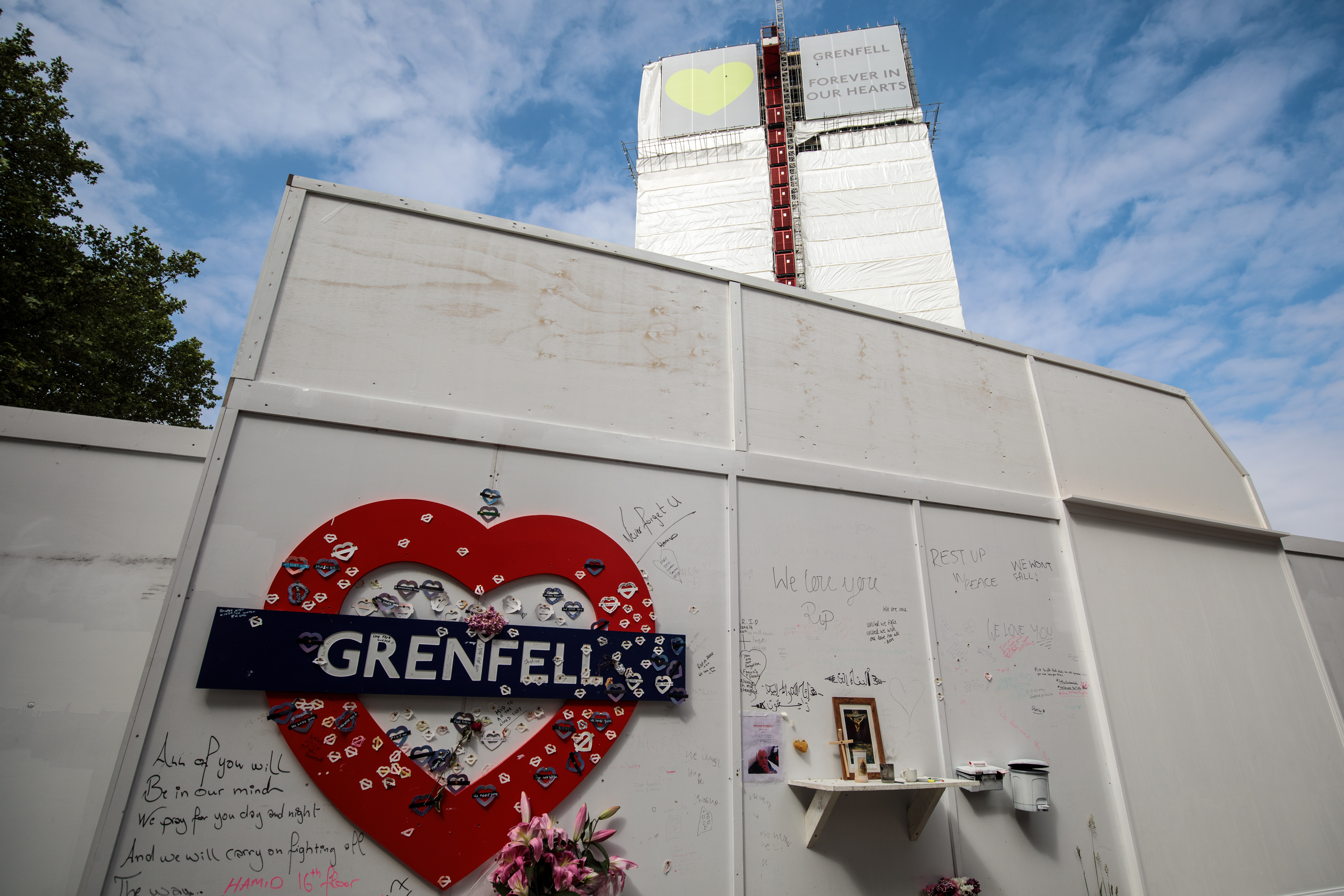In April 2010, seven years before the building was burned to the ground, a smaller fire broke out at Grenfell Tower, leaving three residents injured and exposing a serious problem with the block. Instead of funnelling smoke out of the building, the tower’s smoke extraction system simply moved it up to higher floors. This was extremely worrying in a block with just one escape staircase.
‘Should a fire occur in the staircase of Grenfell Tower, there will be no escape route for residents of Grenfell Tower,’ wrote leaseholder Shah Ahmed in May 2010. ‘This raises serious health and safety issues and could trap the residents of building in a fire with no escape.’
According to the evidence before the inquiry, this warning was not enough to get the building manager, the Kensington and Chelsea Tenant Management Organisation (KCTMO), to take action. Nor was a deficiency notice in March 2014 from the London Fire Brigade (LFB), after an inspection revealed the ventilation system was still not working. Even maintenance reports which said the ventilation system was non-functional and beyond repair did not spurn KCTMO into sufficient action.
In December 2014, with the system still unfixed and upgrade work delayed once more, Janice Wray, head of health and safety at KCTMO, wrote in an email: ‘Let’s hope our luck holds and there are no fires in the meantime.’ A representative of KCTMO said she and Wray were trying to move the works forward, but it was not done until 2016.
This story raises a lot of questions about the culture of the organisation which managed Grenfell Tower. What sort of business would leave a piece of equipment crucial to the safety of 250 people broken for six years?
While the last few weeks of evidence at the Grenfell Tower Inquiry, which is ongoing, may not have been as explosive as the revelations about the cladding and insulation manufacturers heard earlier in the year, in their own way they have been more shocking.
This is a local story: the KCTMO staff knew the residents who say their complaints went ignored and the names of the children in Grenfell Tower. Which is why their alleged failings sound that much more personal.
At one stage in 2014, the organisation had a backlog of 1,400 fire safety issues which had not been resolved across the borough. KCTMO decided not to disclose the risk assessments to the London Fire Brigade to avoid ‘more scrutiny’.
Issues around fire door self-closing devices stood out in particular. These are utterly crucial to safety in a tower block. In a panicked escape from a blazing flat few people have the wherewithal to pull their front door closed. If the door does not swing shut by itself, smoke will simply pour through the building.
In 2015, following a fire in another block, the London Fire Brigade asked for a programme to replace any defective self-closers in other high rises and monitor their condition.
The replacement work was estimated to cost around £600,000 and ongoing monitoring would be an annual expense. This was enough for the council, the Royal Borough of Kensington and Chelsea (RBKC), which set KCTMO’s budget, to push back.
In minutes of one meeting it is recorded that the RBKC’s director of housing, Laura Johnson, bluntly ‘said no’ to the replacement programme. Other documents show that she tried to push it from one year to five to save money. At the time of the Grenfell Tower fire, it had still not been done. Giving evidence last month, Ms Johnson explained her actions by saying the borough had already carried out major works to fire doors in recent years and the experience taught her the process would not be quick to complete.
Nonetheless, the process was not completed by the time of the Grenfell Tower fire. Post-fire examinations of the building revealed that a shocking 64 per cent of the flats in the tower had broken or missing self-closing devices,. Carl Stokes, the private contractor bought in as a risk assessor, had come nowhere close to identifying this scale of issue in his prior routine assessments of the building. He said when he gave evidence that he inspected a sample of the doors, which was all he was legally obliged to do, but the doors he picked did not have issues.
Their absence is believed, by experts advising the inquiry, to have been a key factor in smoke spreading so rapidly through the tower.
The inquiry has also heard how residents with serious mobility issues in the tower were apparently not properly identified, nor given evacuation plans to assist their escape from a fire. On the night of the blaze, some on the lower floors escaped by sitting on the stairs and slowly descending. Many of those on the upper floors were killed.
When asked by the LFB for a list of vulnerable residents in 2012, Mr Stokes advised KCTMO to say ‘nobody’ in their high rises had a disability, as the LFB would ask ‘questions like why were they not including in the building’s [fire risk assessment].’
He said under cross examination that he believed there were not any. Actually, in Grenfell Tower alone, there were dozens – some living in specially adapted flats.
These failures persisted despite regular complaints from a variety of the building’s residents – who say they raised the issue of self-closers, smoke extraction and other potential safety issues.
Their complaints were funnelled into an exhausting bureaucratic three stage process which rarely resulted in meaningful action. According to the inquiry, those who tried to form groups found themselves branded as ‘rebel residents’ and a local councillor who tried to help out was described as a ‘negative force’ in internal KCTMO papers.
For their part, RBKC have apologised for failings in their opening statement, acknowledging that a programme to replace door closers should have been in place sooner. They stressed, however, that the failure to provide evacuation plans to residents was standard in social housing, and supported by government guidance. KCTMO also emphasised this and stressed that it legitimately believed Mr Stokes to be a competent risk assessor.
The inquiry is not over, and no findings have yet been made. Even so, the latest section suggests there is a drastic need for change. The residents of Grenfell Tower may not have known the precise specifics of what was wrong with their building, but they certainly believed that it was not being managed sufficiently.
But they had nowhere to go to raise these complaints except the organisation which they believed to be causing the problem.
The need for some external scrutiny to keep the organisations responsible for social housing focused on the job could not be more plainly exemplified. This is something the government solemnly promised in the aftermath of Grenfell but has since largely forgotten.
It has taken four years to get a white paper together on social housing reform and the legislative reform necessary to introduce even quite modest reforms was relegated to a footnote in the Queen’s Speech, with no bill promised or imminent.
As ongoing reports of mould-ridden homes in council blocks in Croydon reveal, residents still have little recourse if their landlord is letting them down.
It has also dragged its feet on the recommendation made by the first phase of the inquiry that disabled residents of other tower blocks should get an evacuation plan, having only published a consultation this week after being forced to by legal action from a bereaved Grenfell family member.
The 14 June will be the fourth anniversary of the Grenfell Tower fire. If politicians want their platitudes at the memorial to ring true, these broken promises must be put right.







Comments